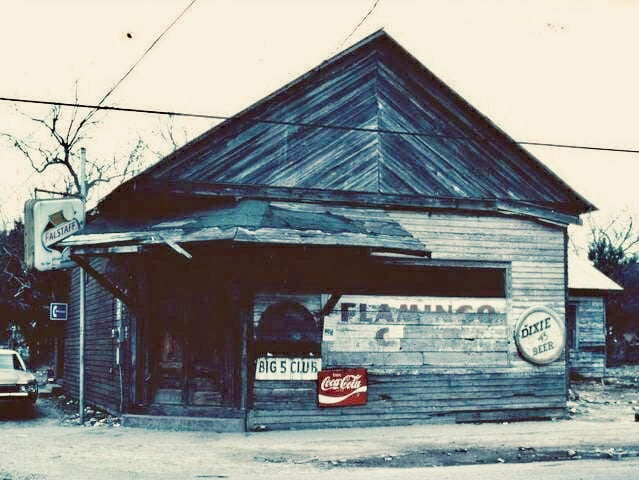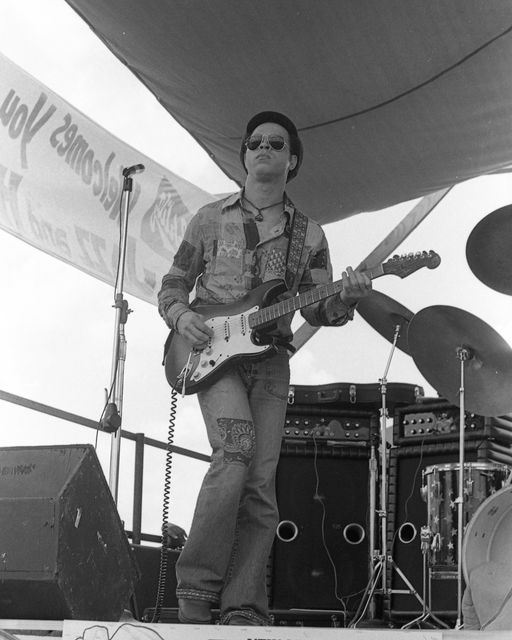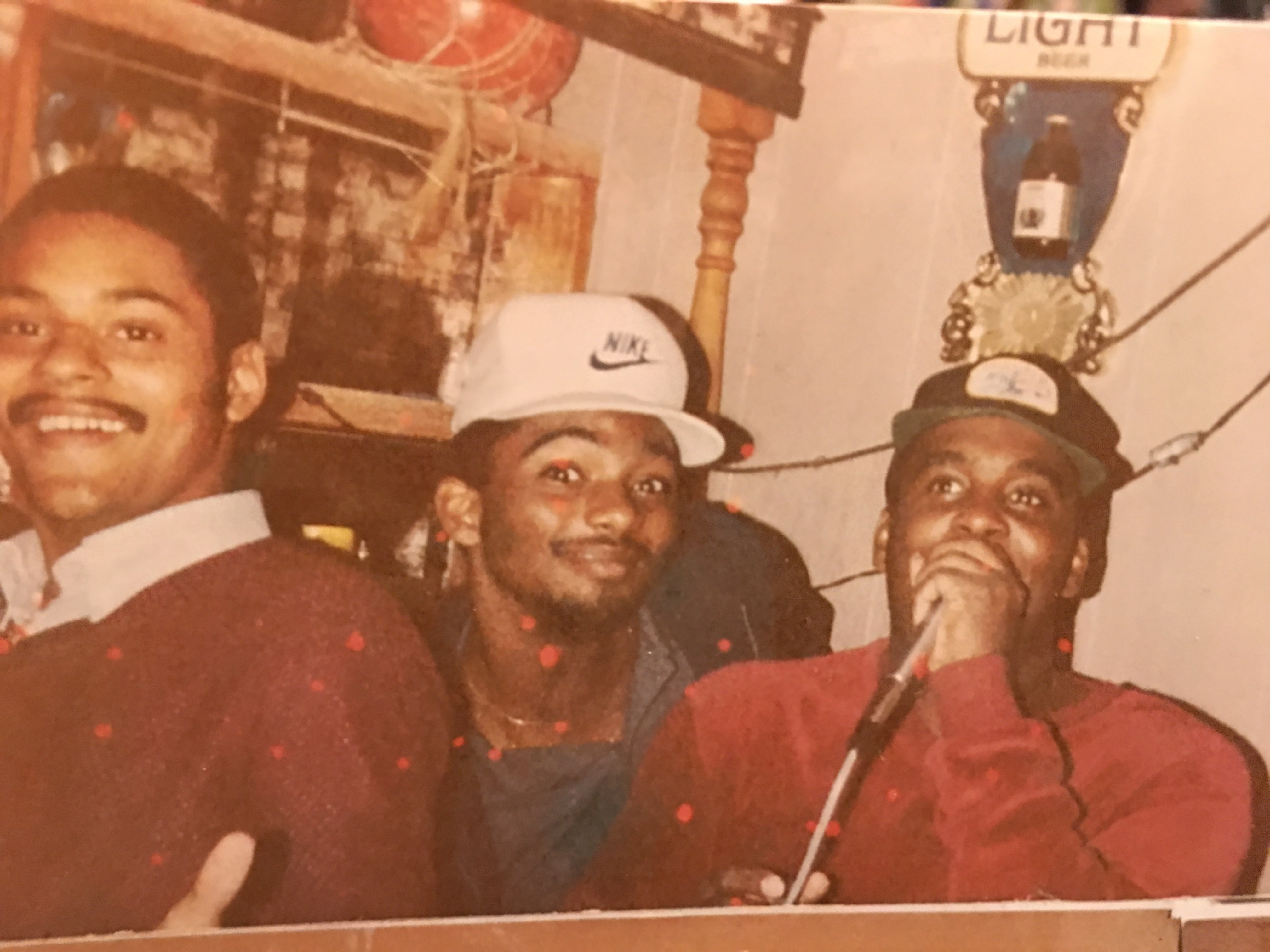This article originally appeared in the BSL Shoofly here.
The Juke Joints of Bay Saint Louis
https://www.bslshoofly.com/archives/the-juke-joints-of-bay-saint-louis
“Musically speaking, the Jook is the most important place in America. For in its smelly shoddy confines has been born the secular music known as the blues, and on blues has been founded jazz. -Zora Neale Hurston
The juke joints or Black bars along Sycamore Street and beyond in Bay Saint Louis were more than watering holes, they were private spaces for Black folks. Bars such as The Krack, the Onion and The Big 5 attracted locals as well as out of town visitors looking to greet familiar faces and pass a good time. The juke joints began opening in the late 30s, early 40s, against a still shadowy backdrop of segregation and Jim Crow laws. For African Americans, there were no public spaces, other than church, to socialize and celebrate except in the ones they created.
Paul Oliver writes that juke joints were, "the last retreat, the final bastion for black people who want to get away from whites, and the pressures of the day.” Here in Bay Saint Louis, there were dozens of these bars, but at the top of everyone’s list was the Krack Bar & Lounge, owned and operated by Floyd Moseley, Sr. and his family for an extended period of time. Claudette Henley remembers her grandmother owned the property and her dad turned it into a bar a few years after marrying her mother (1935). Her younger brother, Floyd “Martin” Moseley, Jr., worked along side his father. “My dad couldn’t read or write but he could count money,” said Martin. He said the building was one large room, and it had a small crack where you could see inside, hence the name. Over time, the Krack grew to have a restaurant on one side and a pool hall on the other side.
In the Black community, the Krack was the place where you started and where you ended. “The Krack never closed,” said Golden Fairconnetue. “No matter where you went, you always wound up back at the Krack.” According to Calvin Smith, whose grandfather Oswald Gilbert took over after Floyd retired. The Krack was known far and wide and frequented by many people from New Orleans and others from along the Gulf Coast. “It had an aura that attracted many customers who liked the atmosphere. Good music, good food and beer by the barrel flowed from behind the bar there,” said Calvin.
Ms. Blanche Godfrey operated the restaurant and served memorable hamburgers and fries to adults and kids. Oswald ran the bar until his death in 1957, and then his son, Anthony, better known as “Gil,” took over. Although Hurricane Camille ravaged the area in 1969, the Krack withstood and after being patched together with tin, reopened to a welcoming crowd. The Krack was an ongoing institution until Hurricane Katrina devastated it and the area in 2005.
The Big 5, on 437 Sycamore Street, opened in the 50s, and was owned for a decade by Nathan “Sweetie” Little with Thomas Lahland. The bartender was James Smith. “James worked for Mr. Mark, a white guy, servicing pool tables, juke music boxes, and vending machines. This gentlemen helped James purchase the building in the 1960s,” said James’ wife, Pinky Lee. The Big 5 was open seven days a week and most weekends didn’t close until way after the sunrise. According to Pinky, James would get a couple hours sleep and open right back up. The bar sold pig feet, pig lips and hot links with crackers. The choice of beer was Schlitz, Falstaff, and Miller Highlife Ponies and Miller Lite. You could always bring in your own ½ pint of hard liquor and purchase a set up, which was two Cokes or 7Ups with a bowl of ice. Two years after James’ death in 1996, Pinky Lee sold the property to Jordan Bush who eventually made it a church.
Also in the 50s, Mama Harriet’s Snack and Bar opened at 435 Sycamore Street. Mama Harriet mainly ran a rooming house for men who worked on the railroad. Business was good so she soon added a bar, restaurant and sweet shop. Children were not allowed inside but instead, went to a window to buy candy, chips, drinks and homemade freeze pops. After Mama Harriet lost her eyesight, her daughter in law, Olivia, ran the window. When her son, Clarence, and Olivia both passed away, Clarence’s daughter, Ann Evans, came home from New York and renamed it Tavern on the Green, which was short lived due to her health. The place sat abandoned until Hurricane Katrina destroyed it.
Social life flourished along Sycamore Street and the surrounding neighborhood for African Americans and many more juke joints opened. The Onion was soon another hot spot in the area. It was owned by Frank Lewis who operated three clubs: Lewis’ Bar on St. Frances Street in the 50’s, The Big Four in Waveland and the Onion that opened in the 60s. Ollie Mae said, “My dad really loved his businesses because he wanted to socialize and be among his friends.” In the 70’s, the Onion changed its name to The Red Machine Lounge, and Ollie and her sister, Rose, took over the management.
These bars provided a place for African American community members to gather in the safety of their own kind, socialize and enjoy themselves. The businesses also served the greater need of the community to engage in activities that were closed off to them from the mainstream. According to Calvin, the Krack sponsored an adult football team called the Bay Wildcats that played against other Black teams from along the coast, New Orleans and Mobile, AL. “Patrons flocked to the bars before and after the basketball and football games. Football was played on St. Stanislaus Athletic Field and basketball at the St. Rose de Lima Gymnasium (aka The Cracker Box).” The Big 5 sponsored a baseball team and The Onion sponsored the Red Machine, a softball team.
On the corner of St. Francis and Sycamore Street sat The Connection, a home turned into a bar by Willie C. Acker (aka The Poor Slave). Willie was a schoolteacher, and his wife, Eartha, ran the club. Willie wanted a place where people could meet and connect by having a cold beer, listening to good music, and enjoying friendship. On any given Saturday at The Connection, you could throw a game of horse shoes and have a plate of good, fresh fish straight off the grill.
Nearby on Sycamore, Daisy Bell bought the former Sam Compretto’s grocery store with the dream of opening a restaurant and bar, which she intended to call Bell’s Restaurant and Lounge. Her children were going to run the business, but her son, Sullivan, took a job with MAPP Head Start and soon became the Regional Director in Picayune. Her other son, Sterling, pursued his own dream to be an electrician at Ingalls Shipyard, where he became Electrical Supervisor, so her daughter, Sharon, and her husband, Bobby McGown, took over, and the name became Bobby’s Lounge instead. Bobby’s favorite line was, “Juke right now only if you are ready,” which earned him the nickname “Juke.” Bobby’s Lounge became the club of the 80s, where young people felt right at home. The beers of choice were Miller Ponies, Miller lite, Bud and Bud Lite, Heineken and Corona. A host of birthday parties were held there with a big New Year’s Eve party every year. The club was later renamed M.C.M. (Making Cash Money).
In the early 60s, Harry Leroy Lyons (aka The Greedy Man) turned the old Ice House, at 308 Blaize Avenue, into a bar by the same name. His idea was to have a good time with drinking, dancing and some gambling in the back. His customers favored Jax, Dixie, Schlitz and Falstaff beer along with some homemade moonshine. There was a jukebox where for 25 cents you could play three songs. They would listen to music by Al Green, Otis Redding, Mary Wells, Marvin Gaye, Etta James, Ray Charles, Diana Ross and so many other legends of the era. “If only the walls could talk, they would have a lot to say,” his daughter, Dianne Lyons, said. The adult bar was upstairs and there was a teen center on the bottom floor where teenagers could hang out in an ice cream shop under adult supervision.
In 1969, Hurricane Camille devastated the area and destroyed the Ice House. In 1990, The Greedy Man wanted to get back to his passion of music and dancing, so he asked his daughter, Janet Lyons Coe, to help him finance a new business. Janet enlisted her sisters Dianne, Sandra and Connie, and The Lyons Den was created as a family affair. Once a month, The Lyons Den hosted a fashion show, car show, talent show, horseshoe tournament, pool tournament, shrimp and crawfish boils, swing out dance contests, battle of the DJs, and even costume parties and birthday parties. “We weren’t on Sycamore Street like the other clubs, so we had to be creative,” Dianne said. “Every weekend we had a DJ to keep the music fresh. We had William (Joe Willie) Washington, Damien Maurice, Alton Benoit Jr., Dennis Farve and me (DJ Melo-D).” The Lyons Den was a roaring success according to Sandra and Dianne, but after a while, the business took its toll on everybody because all of the sisters had day jobs, too.
The juke joints no longer exist on Sycamore Street and the surrounding area. They were places of and for their time, providing a sense of belonging for a community that was not welcome in the mainstream. There was a certain level of freedom to listen to music created by Black musicians, to dance freely without judgment, and to engage in social activities that strengthened the ties to the community. Specifically, these places provided a welcoming atmosphere not tainted by racism. The word juke traces its roots to an African word “jook,” which means disorderly or wicked conduct. In the Bay Saint Louis juke joints, there was a freedom to do as one pleased, away from the white gaze, which had to provide a tremendous release from the Jim Crow blues.
An incomplete list
The Krack – (40s) Sycamore Street, first lot on right after railroad track
The Big 5 – (40s) 437 Sycamore Street
The Breeze Inn – (50s) 309 Keller Street
Lewis’ Bar – (50s) St. Francis Street
Mama Harriett’s Snack & Bar – (50s) 435 Sycamore Street
The Onion – (60s) Sycamore Street
Sister & Verna’s Place (60s) – The Bottom
The Hideaway – (60s) 524 Main Street
Ice House Bar – (60s) 308 Blaize Avenue
The Connection – (70s) Corner of St. Francis & Sycamore Street
Bobby’s Lounge – (80s) Sycamore Street
The Lyon’s Den – (90s) 211 Central Avenue




Leave a comment
All comments are moderated before being published.
This site is protected by hCaptcha and the hCaptcha Privacy Policy and Terms of Service apply.